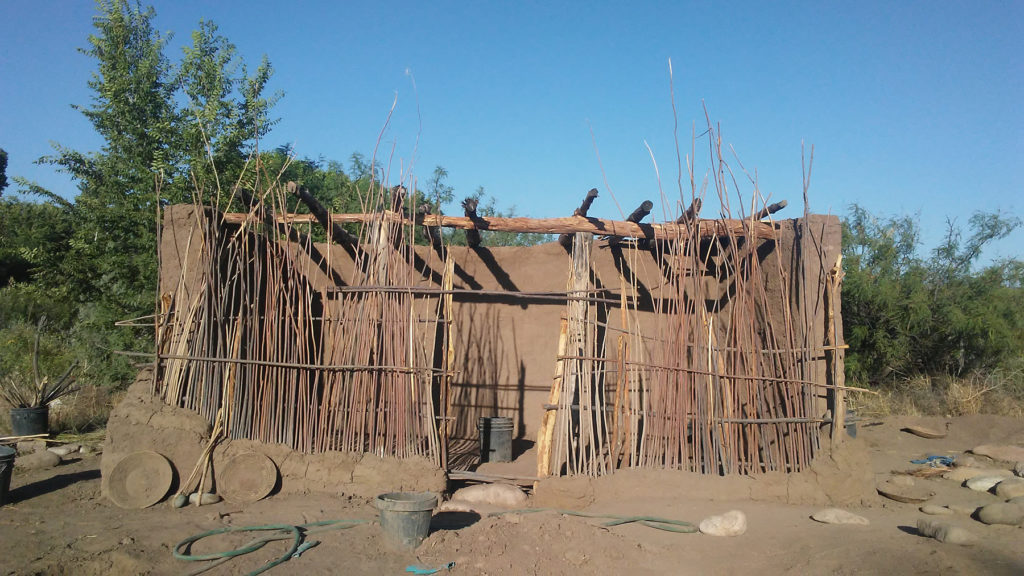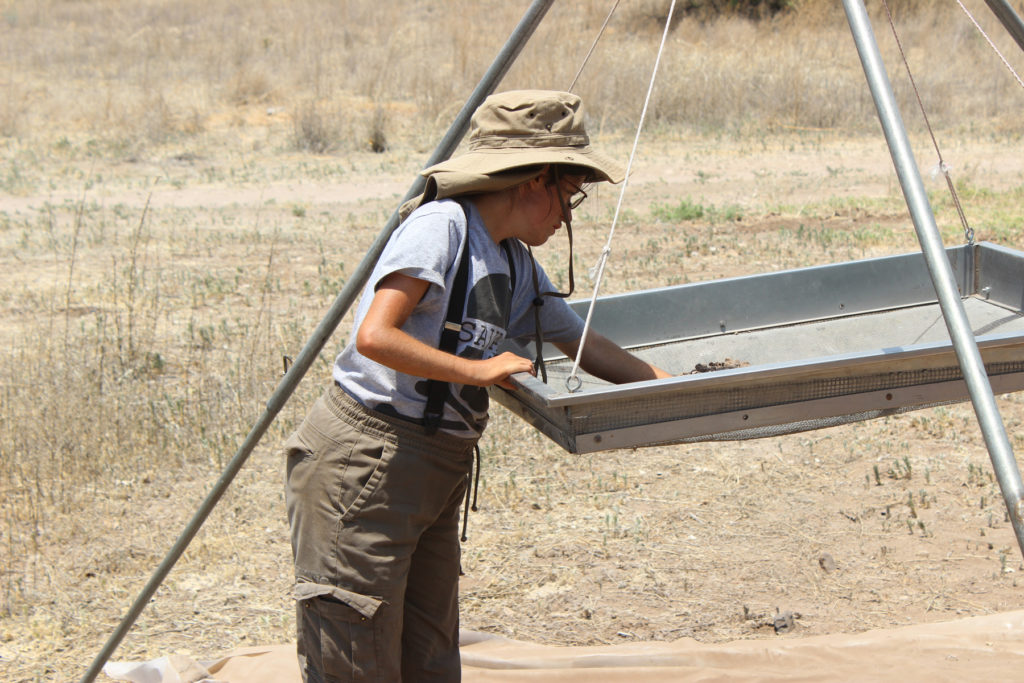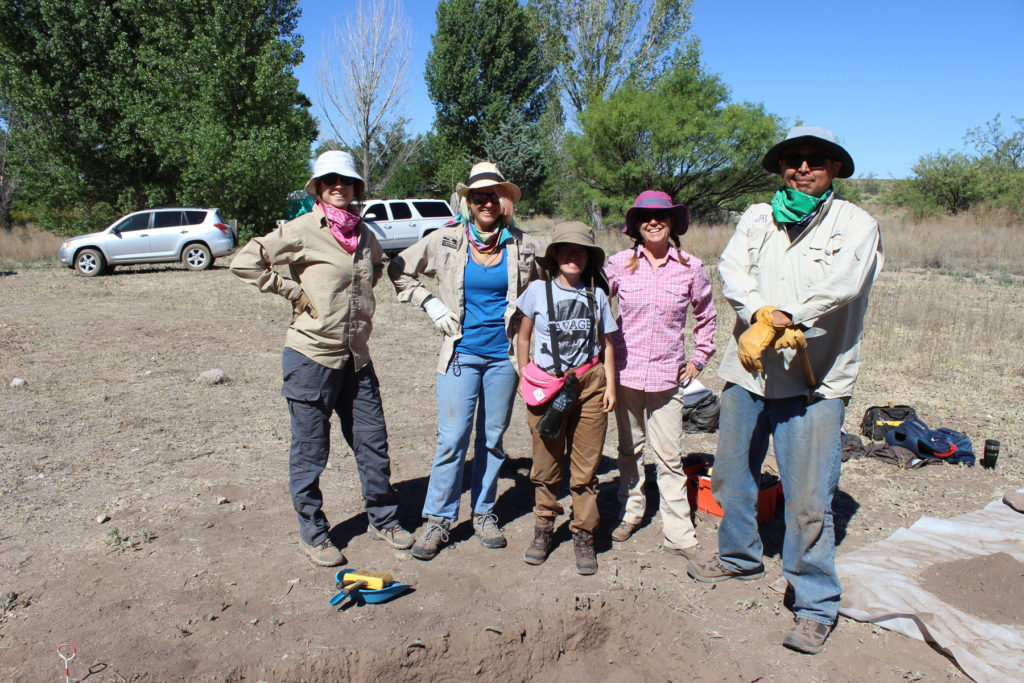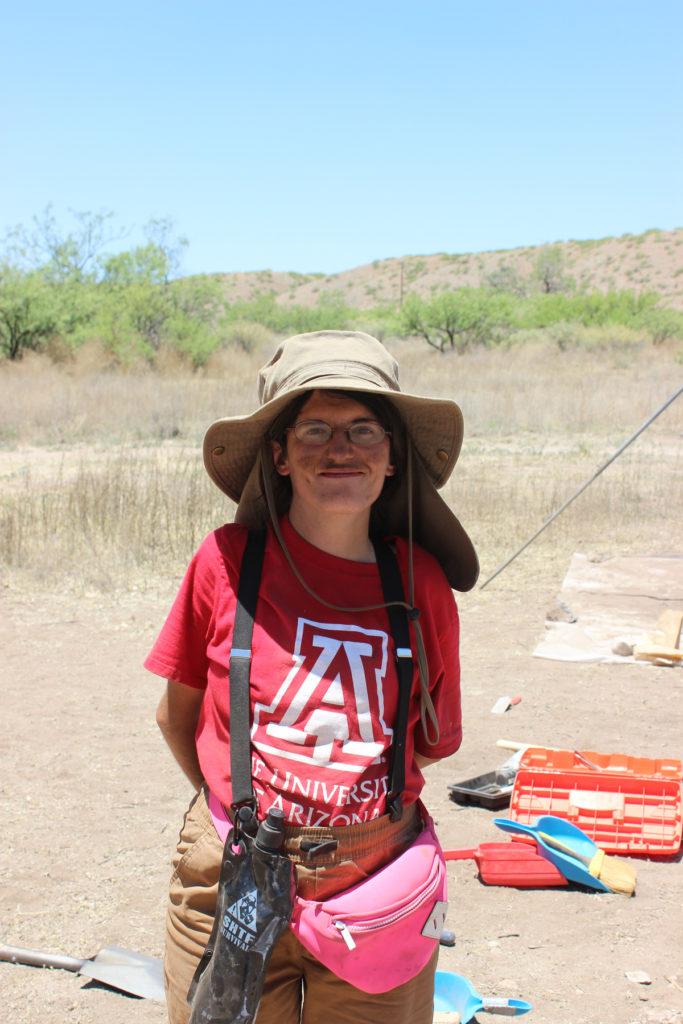- Home
- >
- Preservation Archaeology Blog
- >
- Adapting

(July 10, 2018)—During our time at this field school, many of our lessons have been about how people adapted to their environment over time. Through our lectures and excavations, we’ve learned how ancient people in the Southwest adjusted to social change by integrating with other cultures and creating a new belief system that archaeologists call “Salado.” We learned to build an adobe house and carve atlatls with primitive technology during experimental archaeology. This demonstrated how people adapted to their surrounding environment to provide for their basic necessities using items like trees and mud. It’s been an amazing experience and a lot of fun learning how to perform tasks with primitive technology. Doing all of these things really emphasized how much skill and strength that ancient people had to maintain to perform these tasks. Incredible!

Being here has taught me that adaptation is as important in the past as it is to the practice of archaeology and how we understand history. Over the past couple of weeks, we’ve been working in an unfamiliar environment and living a lifestyle completely different from what we are used to, like dealing with intense heat or living in a tent! Also, we’ve been doing a lot more physical labor than we’re used to, like digging trenches and lifting buckets for hours on end. As a result, all of us are learning how to adjust to our environment while keeping up with all of the physical tasks. Needless to say, this has involved a lot of adaptation on our part.

These experiences have taught me how archaeologists adapt every time they go out on a month long project, or when they manage a field school for a month and a half. Archaeologists make a career of going far from home to excavate, survey, and perform a number of other physically demanding tasks, just as we’ve been doing for the past couple of weeks. Seriously, it takes some guts! On an even more personal note, my experiences at this field school have taught me about a person’s ability to adapt to the challenges presented to them, both individually and as part of a group. At 22, I stand at exactly 4 feet, 8 inches and weigh about 84 lbs. As such, one could envision a certain level of difficulty in digging for hours on end or in building a house by hand. Still, these challenges have helped me learn the depth of my own capabilities, as well as the range of my limitations. When facing tasks that I could not perform alone, I learned exactly how important it is to have a good crew that always has your back!

Most of all, watching and experiencing how archaeologists continuously adapt to their environment was such a relief to me. It taught me that, no matter where you’re from or what your struggles are, there is room for everyone in archaeology.
